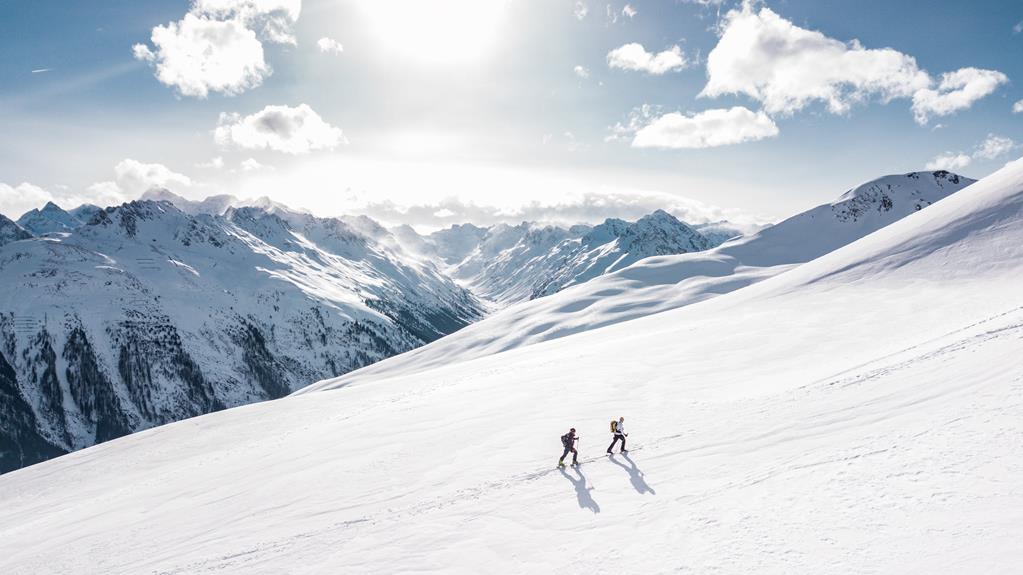Remount Ski Bindings – Essential Tips Inside
Picture this: you're standing at the top of a pristine mountain, ready to conquer the slopes. You've got the perfect set of skis, the ideal boots, and the confidence of a seasoned skier.
But wait, what if your bindings aren't properly aligned? What if they're not adjusted to your boots? Suddenly, that feeling of excitement turns into a nagging doubt.
That's where remount ski bindings come in. They offer a solution to ensure your equipment is perfectly tailored to your needs, maximizing your performance and minimizing any potential risks.
So, whether you're a seasoned pro or a beginner hitting the slopes for the first time, let's delve into the world of remount ski bindings and discover how they can enhance your skiing experience.
Benefits of Remount Ski Bindings
Remounting ski bindings offers a range of benefits, enhancing your performance on the slopes and providing increased stability and responsiveness. By remounting your ski bindings, you have the opportunity to adjust the position of your bindings to better suit your skiing style and preferences. This allows for improved balance and control, which can greatly enhance your overall performance and enjoyment on the slopes.
One of the main benefits of remounting ski bindings is the ability to accommodate changes in your skiing stance or boot size. As you progress in your skiing abilities, you may find that a different stance position offers better control and power. By remounting your ski bindings, you can easily make this adjustment and optimize your skiing experience.
Additionally, if you have growing children who are still skiing on the same pair of skis, remounting the bindings can allow for adjustments as their boot sizes increase. This ensures that their bindings remain secure and provide the necessary support and safety.
Furthermore, remounting ski bindings can also expand the adjustment range of your bindings. This means that you can fine-tune your bindings to your specific needs, such as increasing the forward pressure or changing the release settings. This increased adjustability can provide a more personalized and comfortable skiing experience.
How to Choose the Right Ski Bindings
To choose the right ski bindings, consider your ability level, skiing style, and weight for proper release and retention settings. These factors are crucial in ensuring your safety and performance on the slopes.
When it comes to mounting your bindings, it's important to choose bindings that are compatible with your skis. Determine the correct brake width based on the waist width of your skis to prevent accidental release or difficulty engaging the brakes. Additionally, make sure the bindings are compatible with the sole length of your boots within the binding's adjustment range.
Consulting a professional ski technician is highly recommended to accurately set the DIN release settings on your ski bindings. They have the expertise to ensure optimal safety and performance.
Another consideration is the type of skiing and terrain you'll be tackling. Different bindings offer various features such as adjustable release settings, ski/walk mode, or compatibility with alpine touring boots. Take the time to research and choose bindings that suit your specific needs.
Whether you're mounting bindings on a new pair of skis or remounting them on an existing pair, selecting the right ski bindings is essential for an enjoyable and safe skiing experience.
Proper Ski Binding Installation and Adjustment
When properly installing and adjusting ski bindings, it's crucial to accurately determine forward pressure, especially when downsizing ski boots. This ensures proper ski binding installation and adjustment, allowing for a safe and comfortable skiing experience.
Here are some important considerations to keep in mind:
- Compatibility: Before mounting bindings, it's essential to understand the compatibility of the bindings with the shell sizes. This is particularly important when moving the bindings up or down from the factory mount position. Make sure the bindings are suitable for the new boot size to maintain optimal performance.
- Hole Locations: When remounting ski bindings, you may encounter conflicts with the old holes. It's important to address this issue correctly. One rule of thumb is to avoid using the same holes more than three times. In such cases, ski techs often resort to using helicoils or metal top sheets to resolve the problem.
- Center of Mass: Changing boot size can impact the center of mass, affecting the balance on the skis. To address this concern, ski techs may adjust the positioning of the bindings accordingly. This ensures that your weight is properly distributed and enhances overall stability.
- Expert Consultation: Proper ski binding installation and adjustment require technical expertise. It's always recommended to consult certified ski techs or professionals who have the knowledge and experience to ensure your bindings are mounted correctly and adjusted to your specific needs.
Common Questions About Ski Binding Remounting
If you're considering downsizing your ski boots and need to remount your ski bindings, you may have some common questions.
One of the most common concerns is whether it's possible to remount bindings on a ski that has already been mounted before.
The answer is yes, it's possible to remount bindings on used skis, but it's important to consult with a professional at a ski shop to ensure proper installation.
Another common question is whether you can use your old bindings with your new boots.
While it may be possible, it's generally recommended to get new bindings when downsizing boots.
This is because the forward pressure setting on the bindings may not be suitable for the smaller boots, which could affect the performance and safety of your skiing.
Additionally, downsizing boots may move the center of mass forward, so it's important to consider the potential repercussions and adjust your skiing technique accordingly.
If you're unsure about any aspect of remounting ski bindings, it's always best to seek advice from a professional at a ski shop.
Tips for Remounting Ski Bindings Safely
If you're looking to safely remount your ski bindings, there are a few important tips to keep in mind. Follow these guidelines to ensure a secure and successful remounting process:
- Gather the necessary tools: Before you begin, make sure you have all the tools and equipment required for the job. This may include a ski binding jig, screwdrivers, and a torque wrench. Using the correct tools will help you avoid damaging your equipment and ensure a proper mount.
- Follow manufacturer's guidelines: Each ski binding brand may have specific instructions for remounting. It's crucial to carefully read and follow these guidelines to prevent any potential issues and maintain the bindings' functionality and safety.
- Check compatibility: When remounting ski bindings, double-check the compatibility of the new boot size with the existing bindings. Ensuring a secure and safe fit is essential for optimal performance and preventing accidents on the slopes.
- Consider professional assistance: If you're unsure about remounting the ski bindings yourself, it's always wise to seek help from local ski shops or professionals. They have the expertise and experience to ensure the bindings are mounted correctly and safely, giving you peace of mind on the slopes.
Frequently Asked Questions
Can I Remount Ski Bindings Myself?
Yes, you can remount ski bindings yourself. The DIY remounting process requires specific tools and it's important to avoid common mistakes. Remounting can impact ski performance, so consider the pros and cons of professional vs. DIY. Follow tips to ensure proper alignment.
How Many Times Can You Remount Ski Bindings?
You should remount ski bindings no more than three times to maintain ski integrity. Professional remounting is crucial to avoid damage and ensure safety. Each new mounting point should be at least 8mm away from previous holes to preserve ski integrity.
Can I Remount Bindings in the Same Holes?
Yes, you can remount bindings in the same holes, but it's important to consider the proper ski binding alignment and potential risks. It's best to consult a ski technician for professional remounting to avoid common mistakes and ensure safety.
How Do You Move Back Ski Bindings?
To move back ski bindings, first, make sure they're positioned properly for your balance. Adjusting them can affect ski performance, so ensure compatibility with the skis. If unsure, consult a professional remounting service for safety considerations.
Conclusion
In conclusion, remounting ski bindings is a crucial process that can greatly impact ski performance and safety.
It's important to trust certified experts for the installation and adjustment of bindings to ensure optimal performance and prevent any accidents on the slopes.
By choosing the right ski bindings and following proper installation techniques, skiers can enjoy improved performance and have peace of mind knowing their equipment is safe and reliable.






